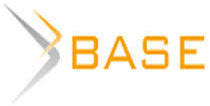Identification of the evolutionary sequence of the emergence and development of interactive learning
Introduction. The phenomenon of interactive learning by its characteristics and potential is intended to act as a reliable tool for implementing the competence-based learning paradigm. However, highlighting interaction and activity as the main concepts of interactive learning, the authors of scientific papers do not consider the object of research from the point of view of the possibility of its complication due to the acquisition of new qualitative characteristics in the process of evolution. Nevertheless, identifying the stages of interactive learning and identifying the evolution of the emergence and development of interactive learning would allow us to solve a number of important theoretical and practical issues that contribute to the organization and implementation of interactive learning, including interactive teaching of foreign languages and Russian as a foreign language, in different types and forms of the educational process. The aim of the article is to describe and identify the stages and identify the evolutionary sequence of the emergence and development of interactive learning. Methodology and methods: the study was carried out on the basis of a categorical-system methodology using the "Final information flow" method; the methodology also included the method of content analysis of scientific literature, and the method of analogies. Results: 1). interactive learning was described as an information system using the parameters of “Logical level”, “Logical limit” and “Transformability”; 2). There was developed an evolutionary model of interactive learning, which includes 6 logical levels and the identity of the interactive learning, beginning from any logical level; 3). it was revealed that the kind of interactive learning and a set of interactive forms and methods are determined by the logical limit; 4). on the basis of logical limit, using the “Transformability” parameter, the possibility of combining the qualitative characteristics of interactive learning was determined. Novelty: an investigation into the nature of interactive learning made on the basis of the categorical-system methodology with the application of the method of "Final information flow" has enabled to more fully and accurately identify and describe interactive learning, to identify its structural elements that carry quality, and also to create a model giving a more accurate and complete view about the quality characteristics of interactive learning. Theoretical significance: The resulting information model will serve as a basis for studying the structural and functional aspects of the study of the subject area of interactive learning. Conclusions: the description of interactive learning based on its evolution (identified stages of development) provides an opportunity for its better organization and implementation in the educational process in accordance with the identified sequence of development stages, which will contribute to a more effective and productive transition to learning based on a competence-based approach.

















While nobody left any comments to this publication.
You can be first.